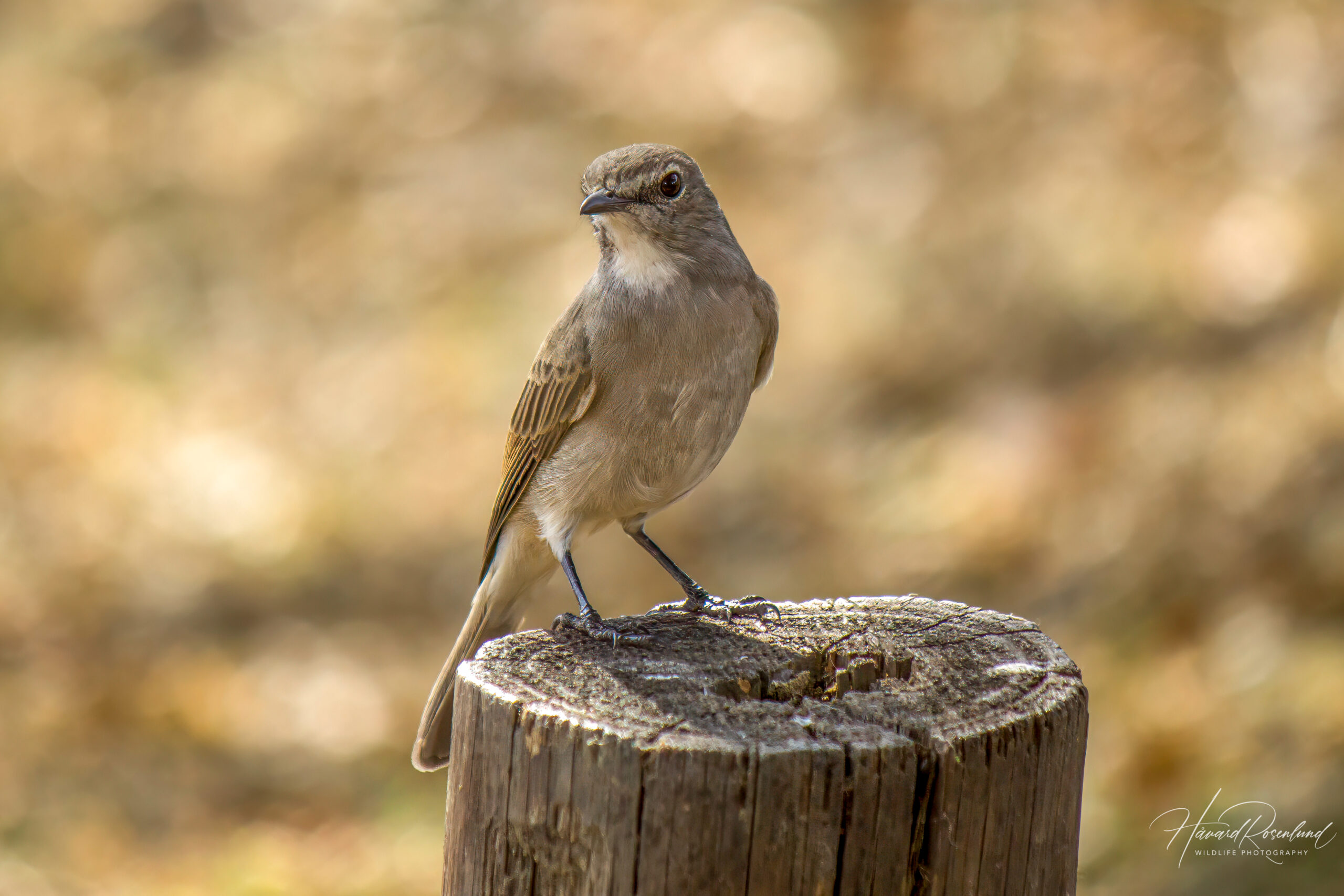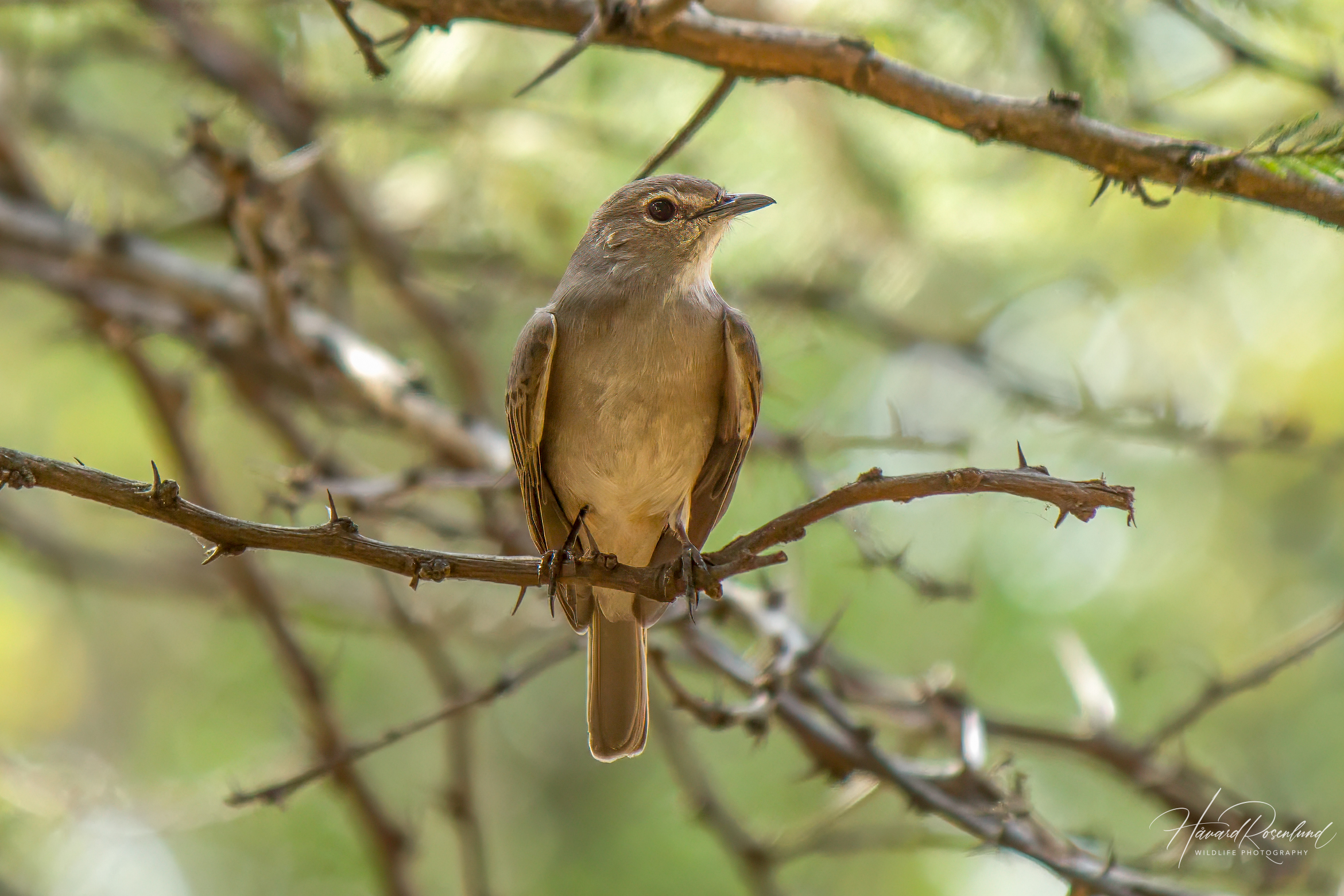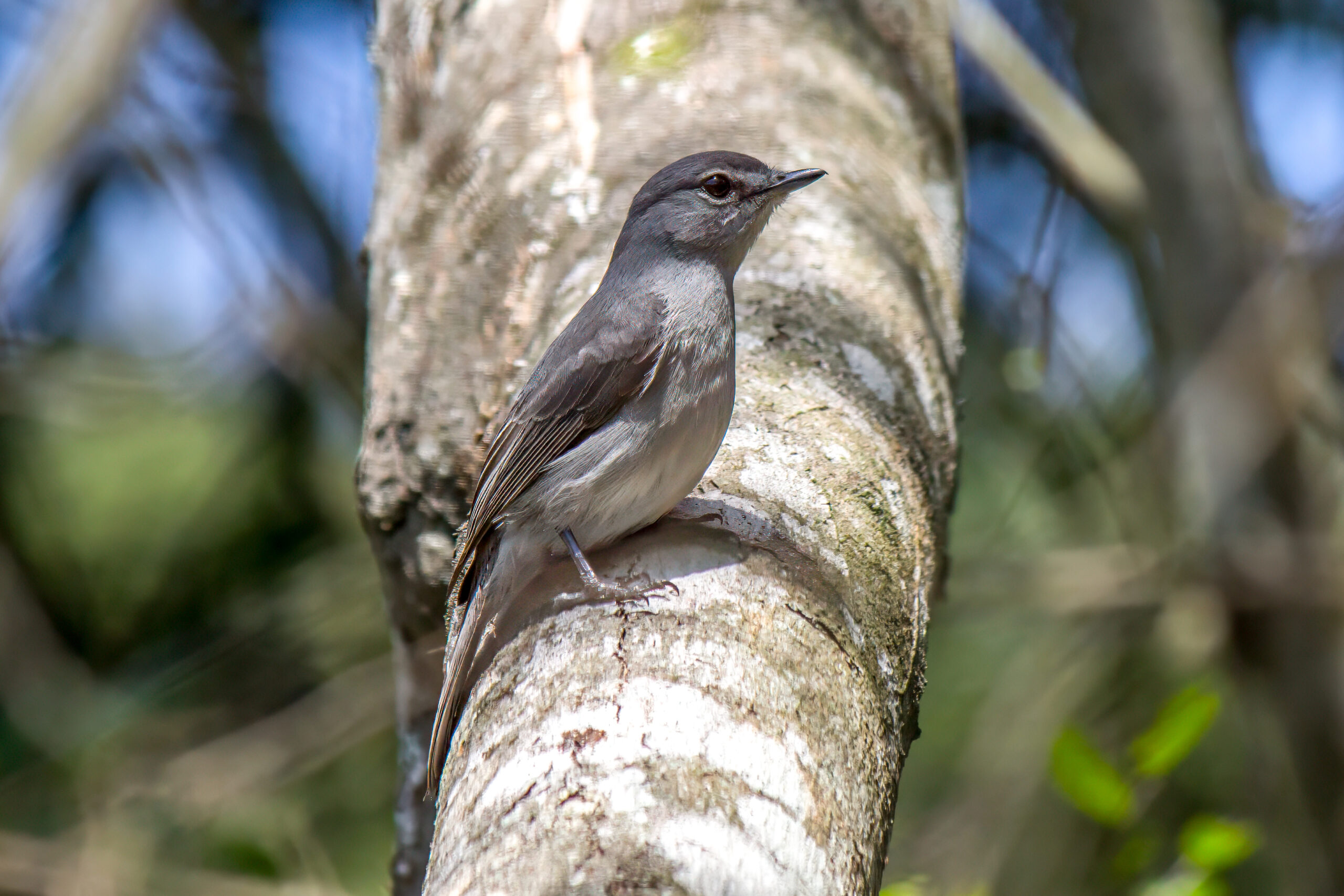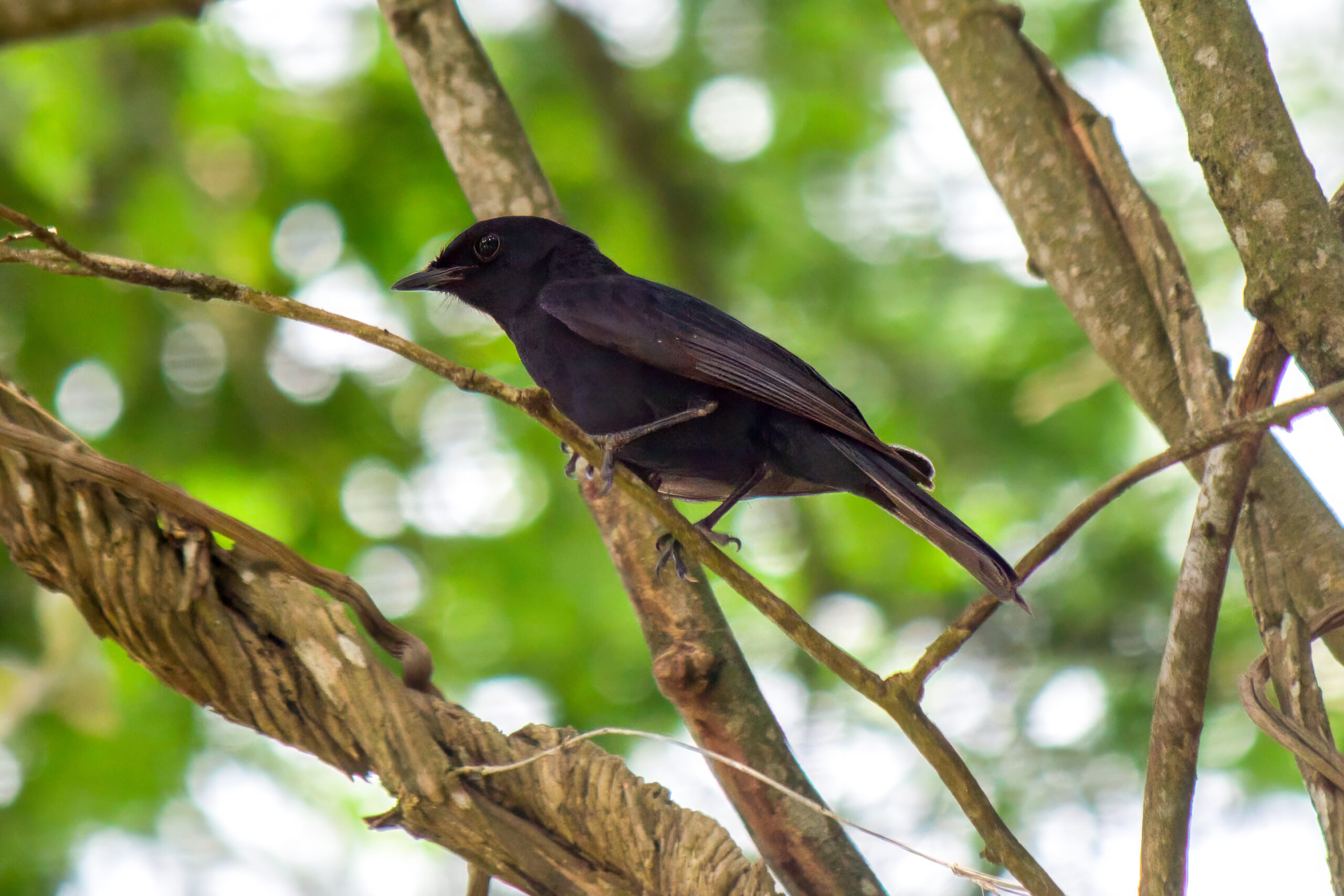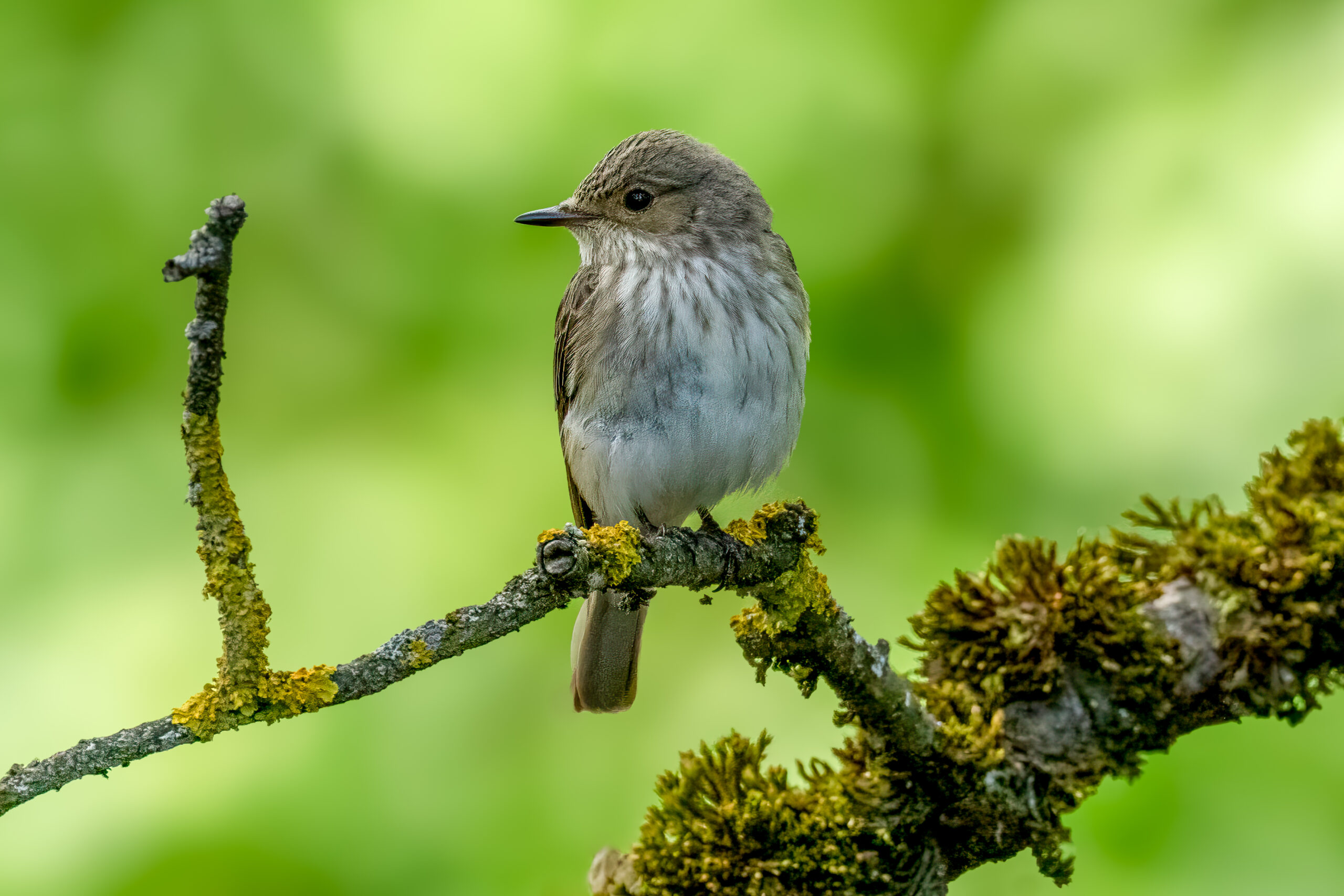Pale Flycatcher
(Agricola pallidus)
Description
The pale flycatcher (Agricola pallidus) is a fairly large species of flycatcher found across large portions of sub-Saharan Africa. It measures 15-17 cm (5.9-6.7 in) in length and weighs 16.5-28 g (0.6-1.0 oz). Its upperparts, including the neck, are earth-brown, while the underparts are pale brown, transitioning to white on the throat and belly center. It is characterized by a pale buff eyering, dark brown flight feathers with rufous-brown edges, and an unstreaked crown. Both sexes appear similar. The pale flycatcher is very similar to the African grey flycatcher (Bradornis microrhynchus), from which it can be distinguished by having an unstreaked crown and less contrast between the dark breast and pale throat.
Diet & habitat
This pale flycatcher primarily feeds on insects such as beetles, flies, and caterpillars, occasionally consuming small fruits. It inhabits a variety of environments, including miombo and mopane woodlands, savannas, and secondary habitats like gardens. The pale flycatcher is known for its adaptability to different habitats, including burnt ground and cultivated areas.
Nesting
Breeding occurs variably across its range, generally aligning with local rainy seasons. The nest is a bowl made of fibers, grass, and other materials, placed in trees or shrubs. Clutches typically consist of 2-4 eggs, incubated by the female for about 14 days. Fledglings leave the nest at around 17 days but stay with the parents for several months. Nest parasitism by Klaas’s cuckoo (Chrysococcyx klaas) has been observed.
Status
The pale flycatcher is frequent to common in many parts of its range, though it faces some habitat threats like deforestation. Its ability to utilize secondary and degraded habitats helps maintain stable populations. It is listed as least concern on the IUCN Red List.




